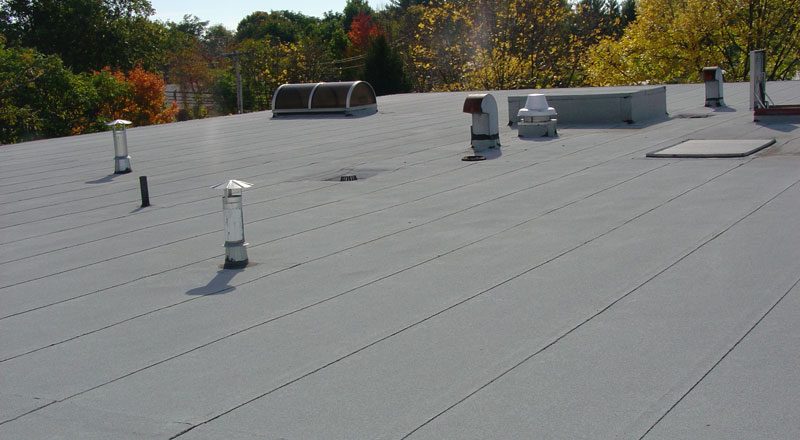Most commonly used on low slope home and commercial roofing. Rubber roofing is actually a synthetic rubber membrane called ethylene propylene diene monomer (EPDM). It consists mainly from oil based by-products with modifiers and stabilizers added in to extend its service life. The material is durable and similar to that of an inner tube with the exception that it is designed to resist sunlight damage. It is single ply and has a number of positive attributes:
- Relatively light weight so it is less burdensome on the existing structure
- High resistance to ozone, hail and other types of weathering
- High resistance to wind damage
- High thermal shock durability
- Great flexibility in low temperatures
- Leaks are easy to patch
- Long life expectancy
Rubber roofs are attached to the existing roof by mechanically securing it with fasteners, gluing or ballasting with stone. The roof seams are sealed with either liquid adhesives or with specially formulated tape.
Of course, there is the other side of the coin. Rubber roofs, in the standard black material, cause a great deal of heat to be absorbed which is not so great in the hot months. Owners do have an option, though! Light-colored coatings can be purchased by adding approximately 25%-30% more to your cost. Like everything, there are positive and negatives to consider with every product. It takes consideration of your needs, desires and budget.
In the next blog, readers will be introduced to an even better roofing option for flat roofing – Durolast Vinyl Roofing
